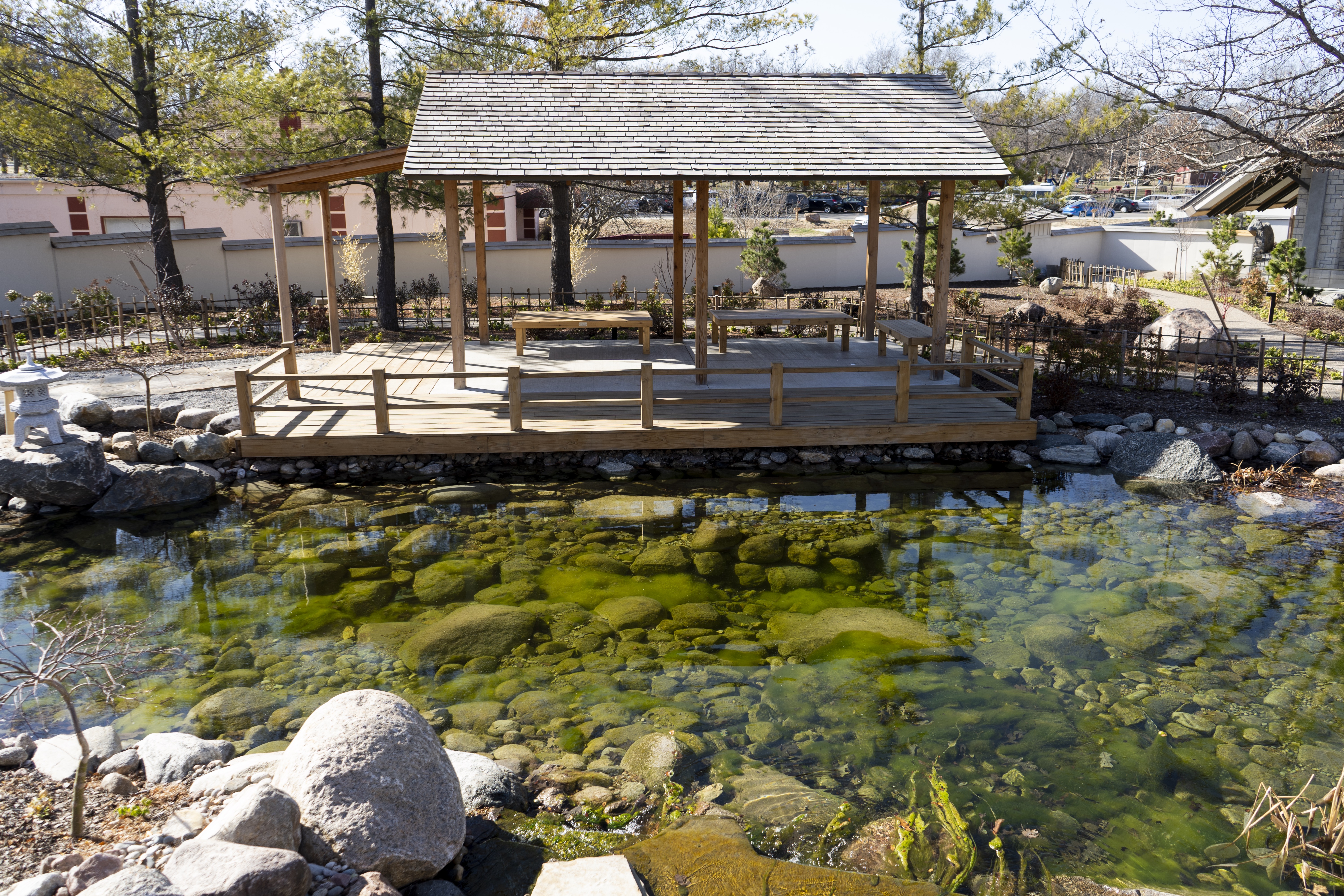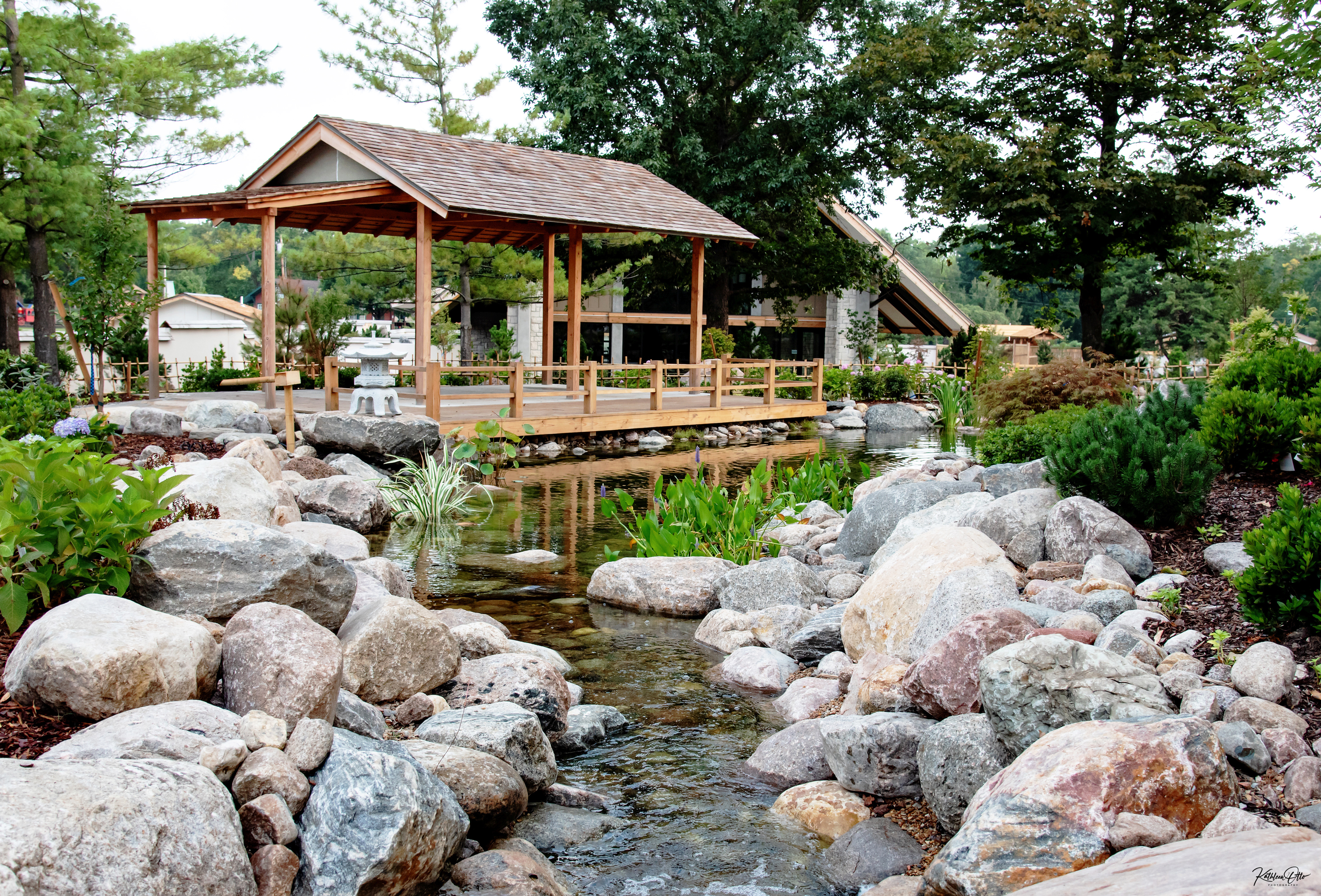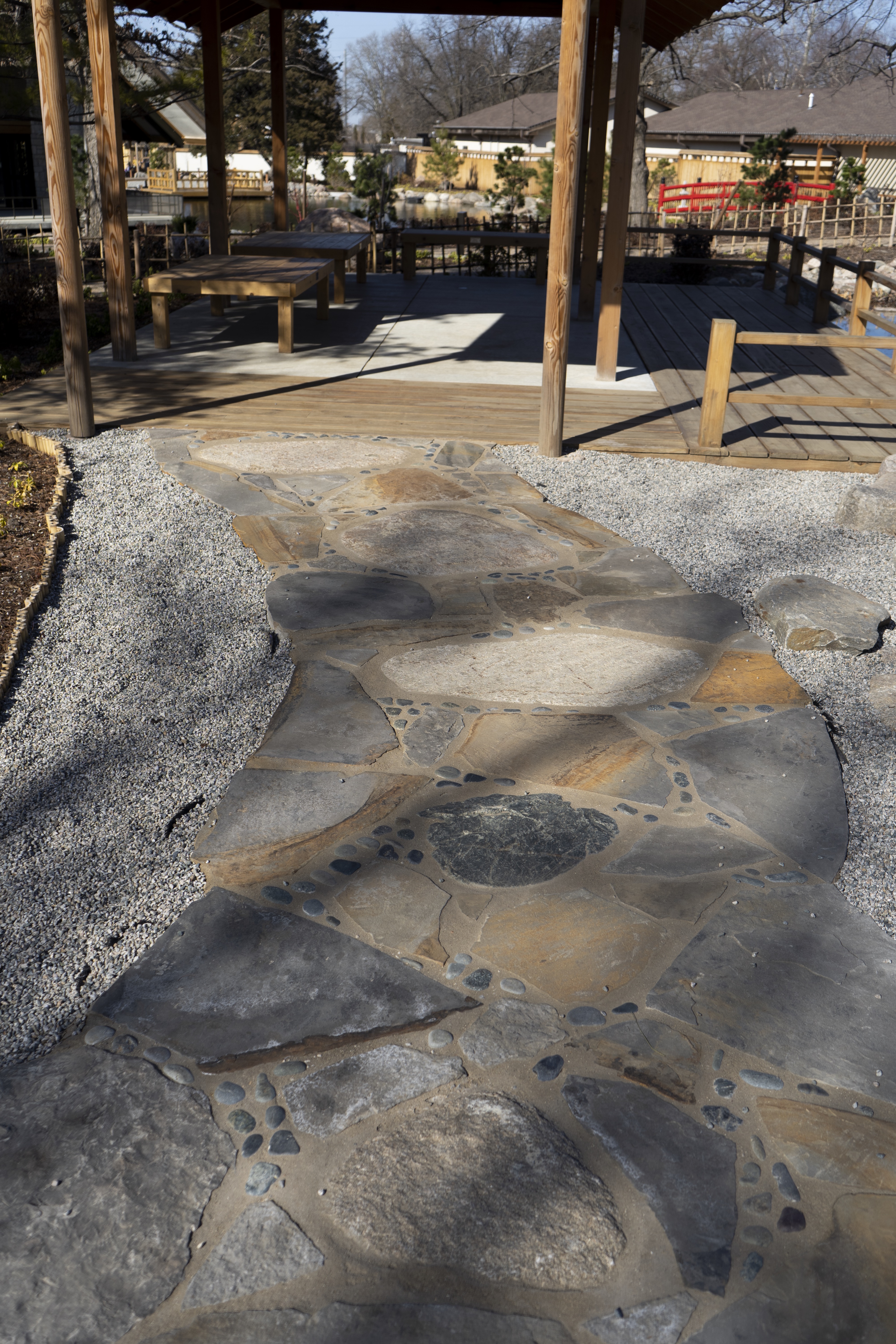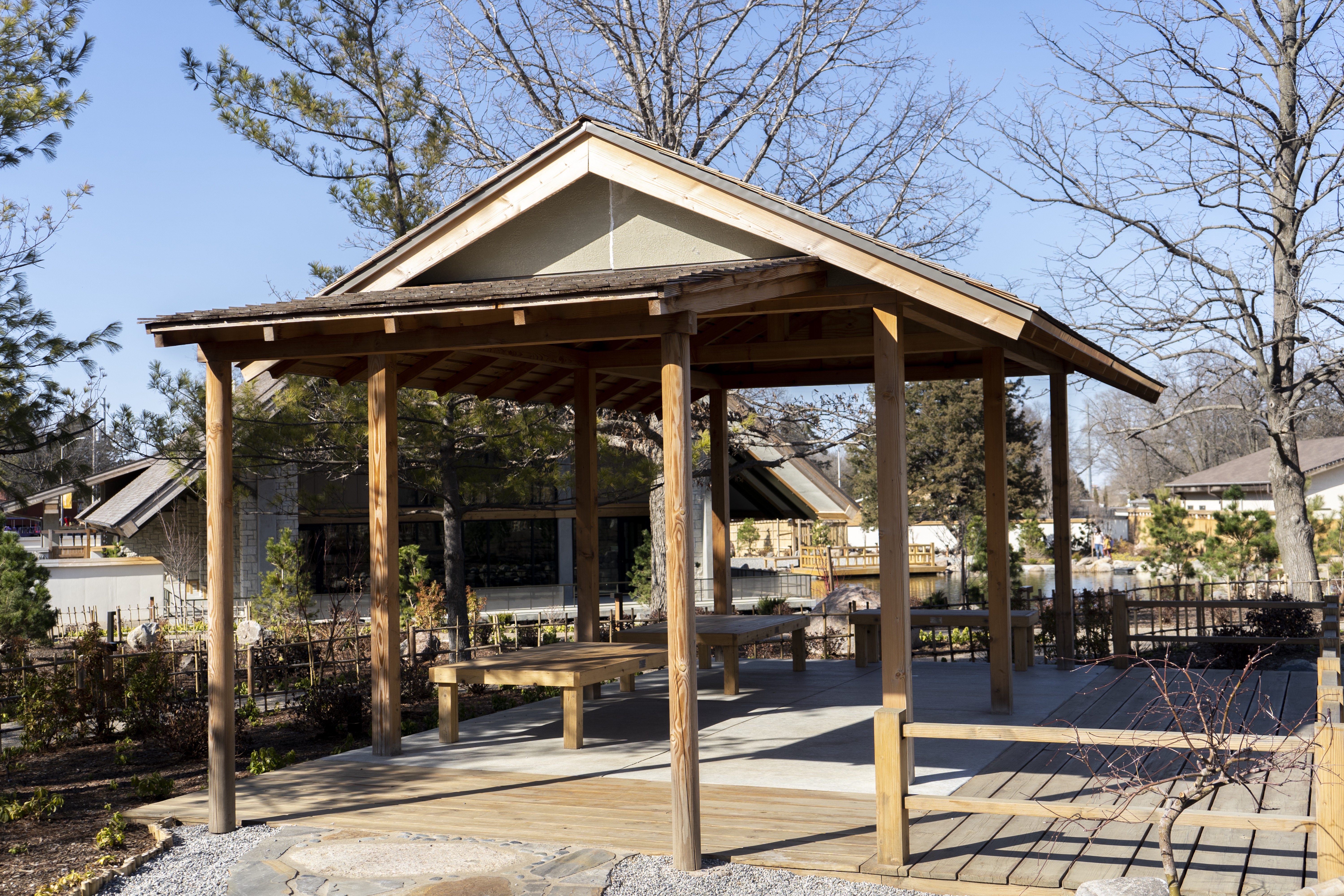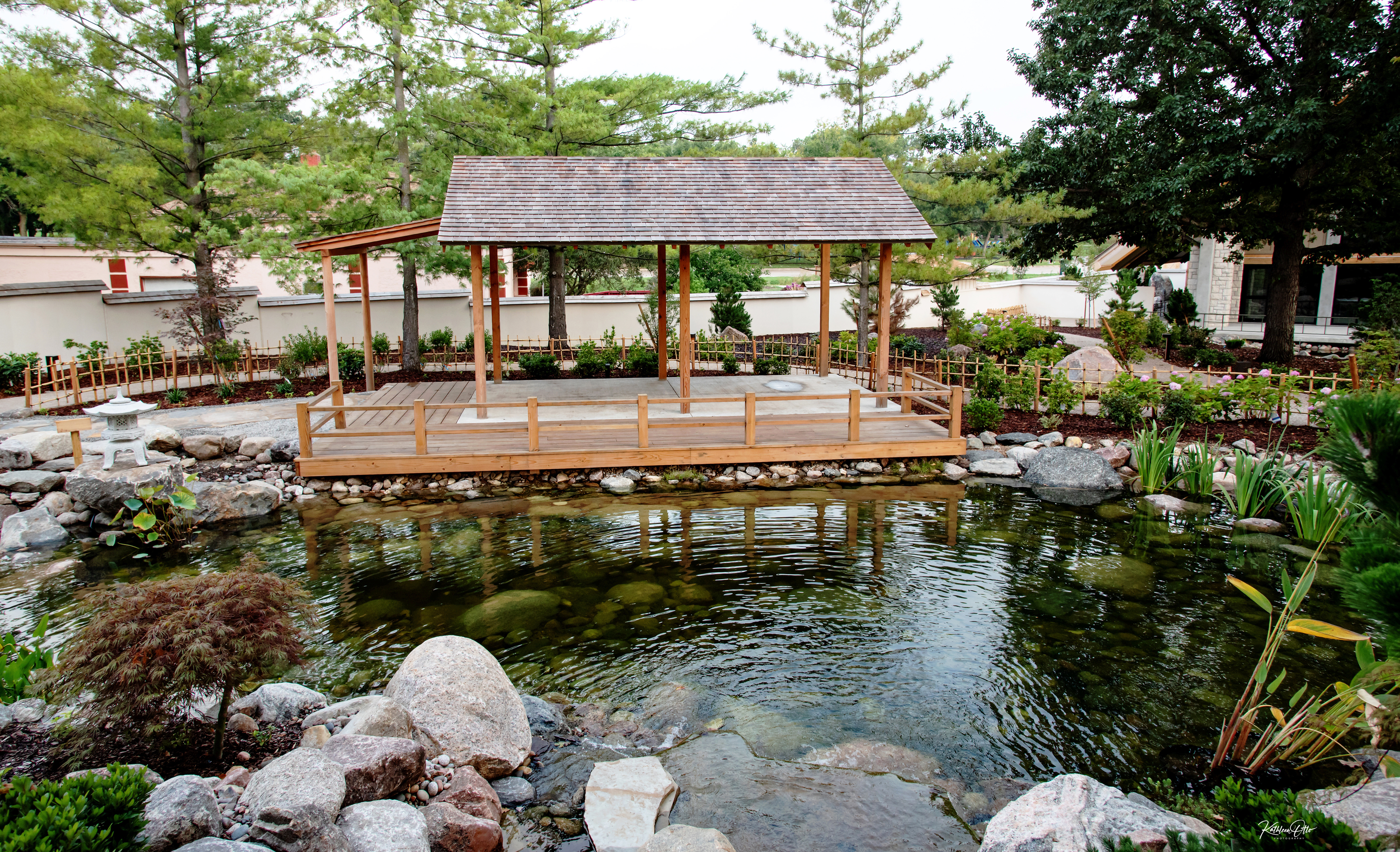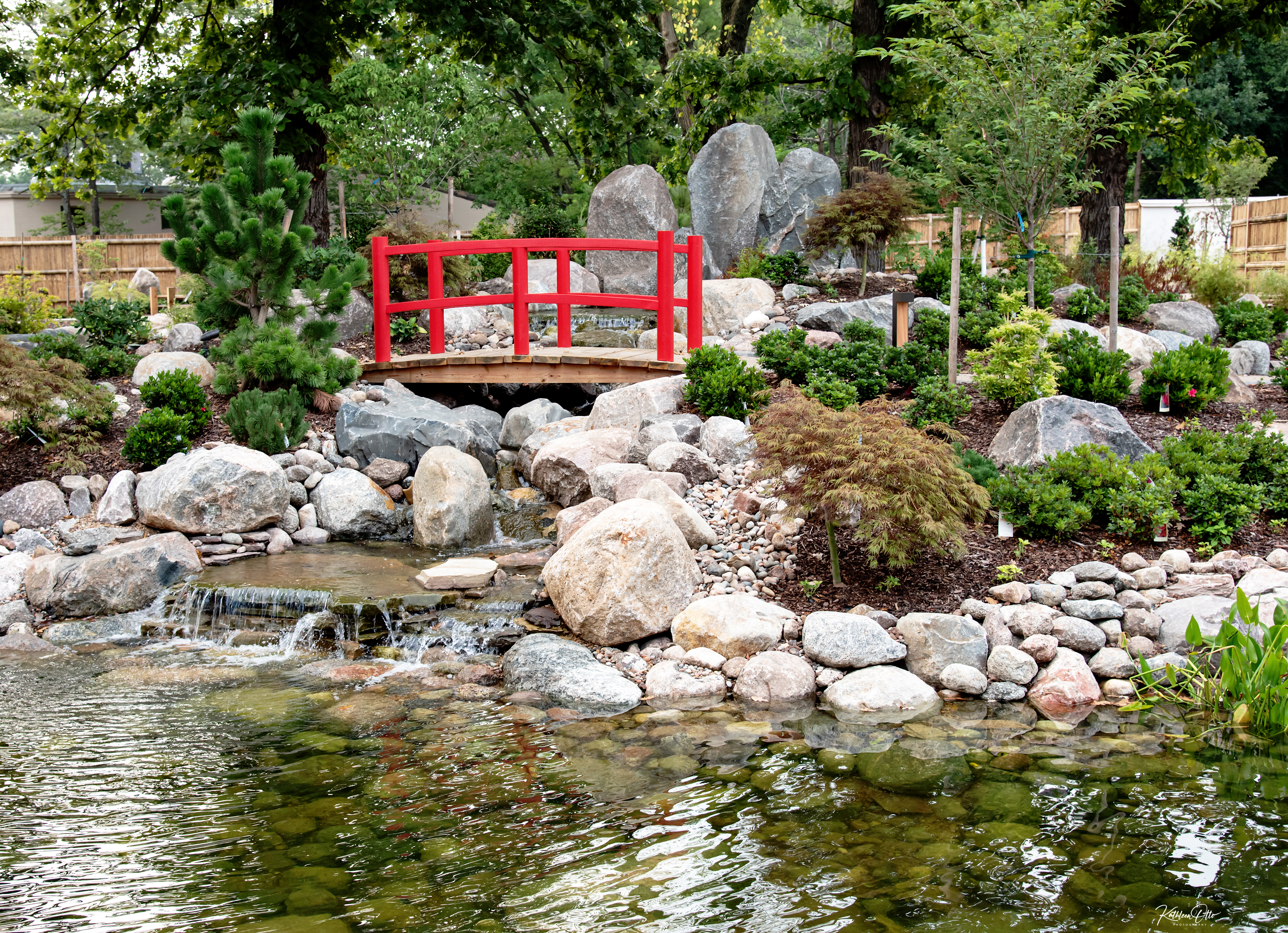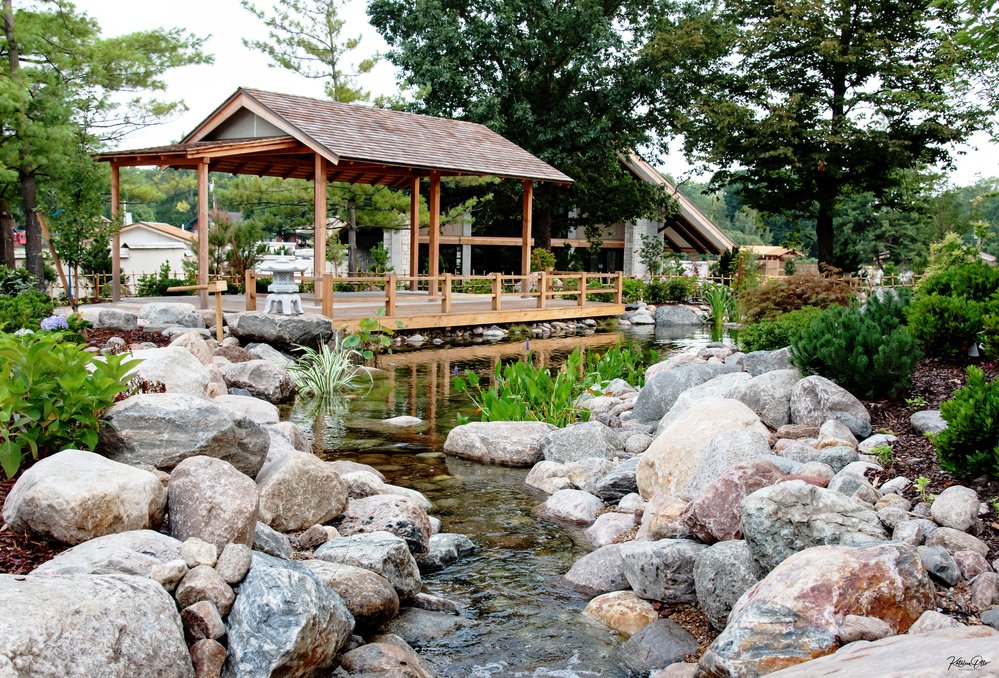
Crane Tea House
Leading up to the Crane Tea House visitors are greeted with the Rok-kaku-yukimigata lantern and a stone basin and bamboo fountain intended to be used for the ritual bathing of hands and feet done before entering.
The entry to the Tea House is known in Japanese culture as the building’s face. On either side of the face are large smooth stones. These are actually only the top of very tall stones that have been buried vertically in the ground. In addition, specially created classical style vertical round poles sit on both sides of the entryway.
Along with the water element, there are stepping stones, each one further than the next to force one to slow down before entering the structure.
Designed with simplicity and tranquility in mind, the Crane Tea House uses limited materials providing one with a place for reflection as they gaze upon the Crane Pool. The tradition of a tea ceremony dates back to the 9th Century and was brought to Japan from China. Ceremonies would last for 4 ½-5 hours and every aspect of the tea ceremony is steeped in ritual and meaning representing purity, tranquility, respect, and harmony.
